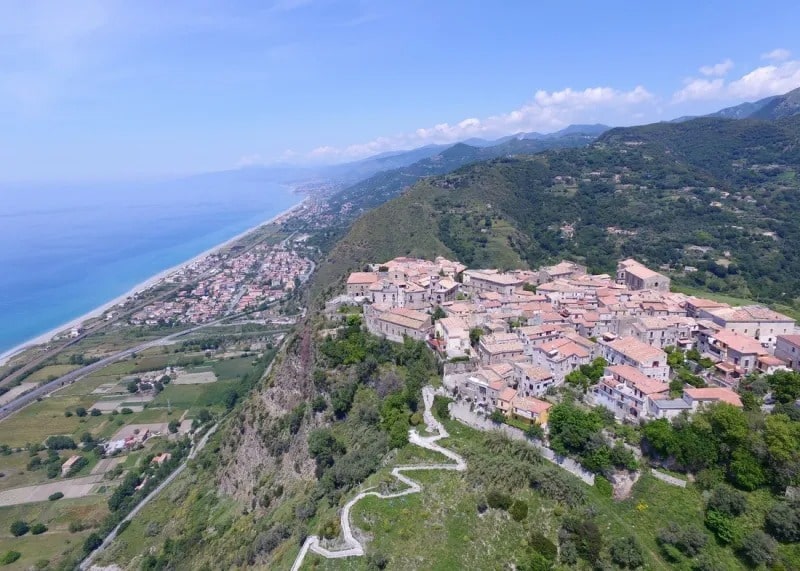
In April of last year, a novel sculpture made its appearance in a square located in the Calabrian town of Paola. Unlike the conventional statues of mounted riders or legged creatures, this piece was an outsized grey stone trout, complete with bulging eyes, pout, and fins. The intention behind this unusual monument was to commemorate a miraculous act performed by the town’s patron saint, Francis, who was canonized in 1519 but whose 500th anniversary celebrations were delayed due to Covid. This Saint Francis, who followed in the spiritual and physical paths of his more famous predecessor, Francis of Assisi, amplified his devotion to the natural world and became one of the earliest documented vegans.
Antonella, the trout, was a regular visitor of the Saint at the monastery’s pool, where he would feed her with breadcrumbs every day. Sadly, due to her tameness, a monk caught her effortlessly and cooked her in a hot pan for dinner. However, before the monk could take a bite, the saint intervened and revived Antonella, denouncing the brother’s greed. Similarly, on another occasion, a pet lamb named Martinello was also brought back to life by the saint, despite having been reduced to charred bones by famished workmen.
Francis didn’t find the strict rule of Franciscan monasteries challenging enough, opting instead to live in a cave near Paola where he prayed all day and slept on bare stone – a level of asceticism that’s difficult to comprehend in today’s world. However, his attitude towards the environment and social justice is easier to relate to. Like Francis of Paola and Pope Francis, Francis of Assisi stressed the importance of living in harmony with nature and not exploiting it. Similarly, in 15th-century Calabria, the powerful mistreated ordinary people unless they were being observed by holy men. To protect the people of Paterno Calabro from their oppressors and save their souls, Francis established a monastery in Paola and opened another in Paterno in 1472.
The second trail, which spans 39 miles from Paterno to Paola, is a diverse and fascinating route that includes three stages. One part passes through a high plain south of San Fili, where daisy-covered meadows are grazed by large brown cows with calm, cream-colored faces. The last leg features a ridge climb and a descent with stunning views of the sea and Stromboli island.
At Trattoria Da Capone in Paola, a vegan “monk’s dinner” was served that was anything but self-denying. The meal consisted of olives prepared in various ways, sun-drenched courgettes and carrots, wild chicory, aubergine “meatballs,” and pasta dishes made with beans, garlic, and cherry tomatoes.
Francis is credited with many extraordinary feats, such as using his cloak to sail to Sicily and protecting Paola from a devastating earthquake in 1905. While he may not have the power to solve our modern-day problems of global warming and inequality, the low-carbon (albeit high-carb) trail through Calabria’s hills has the potential to work small wonders for hikers and the people they encounter along the way.



